Term | Explanation | Images/examples | | |
Natural hazards | The actual physical event or process Potential impact on humans A potential event Evaluating a natural hazard Magnitude Time Frequency of occurrence Speed of onset
Space
| | | |
| | | | |
| Definition: Hazards related to water bodies and water processes. Examples: Floods, tsunamis, storm surges, and coastal erosion. Impacts: Damage to infrastructure, loss of life, soil erosion, and contamination of water sources.
| | | |
| Definition: Hazards related to the atmosphere or weather events. Examples: Hurricanes, tornadoes, cyclones, heatwaves, droughts, and storms. Impacts: Property damage, disruption to services, health risks, and agricultural loss.
| | | |
| Definition: Hazards arising from biological processes or living organisms. Examples: Disease outbreaks, pandemics, pest invasions, and invasive species. Impacts: Public health crises, crop loss, and environmental degradation.
| | | |
| Definition: Hazards associated with the Earth's crust and landforms. Examples: Earthquakes, volcanic eruptions, landslides, and sinkholes. Impacts: Loss of life, destruction of infrastructure, soil disruption, and long-term environmental effects.
| | | |
| Long-term shifts in temperature, precipitation patterns, and other climate factors over extended periods. Primarily caused by increased levels of greenhouse gases (e.g., CO2, methane) from human activities such as burning fossil fuels, deforestation, and industrial processes. Leads to rising global temperatures, more extreme weather events (e.g., heatwaves, storms, droughts), and shifting ecosystems. Impacts: Melting ice caps, rising sea levels, disruptions to agriculture, biodiversity loss, and increased frequency of extreme weather events. Global challenge requiring mitigation (reducing emissions) and adaptation (adjusting to impacts).
| | | |
Global wind patterns and circulation | Hadley is 0-30 degrees latitude Ferrel is 30-60 degrees latitude Polar is 60-90 degrees latitude
| 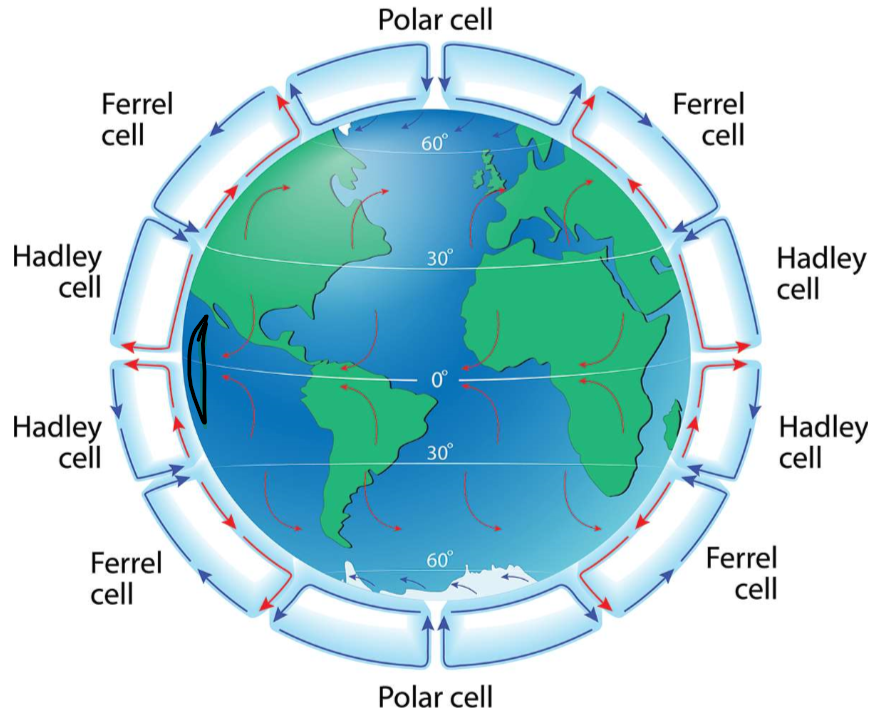 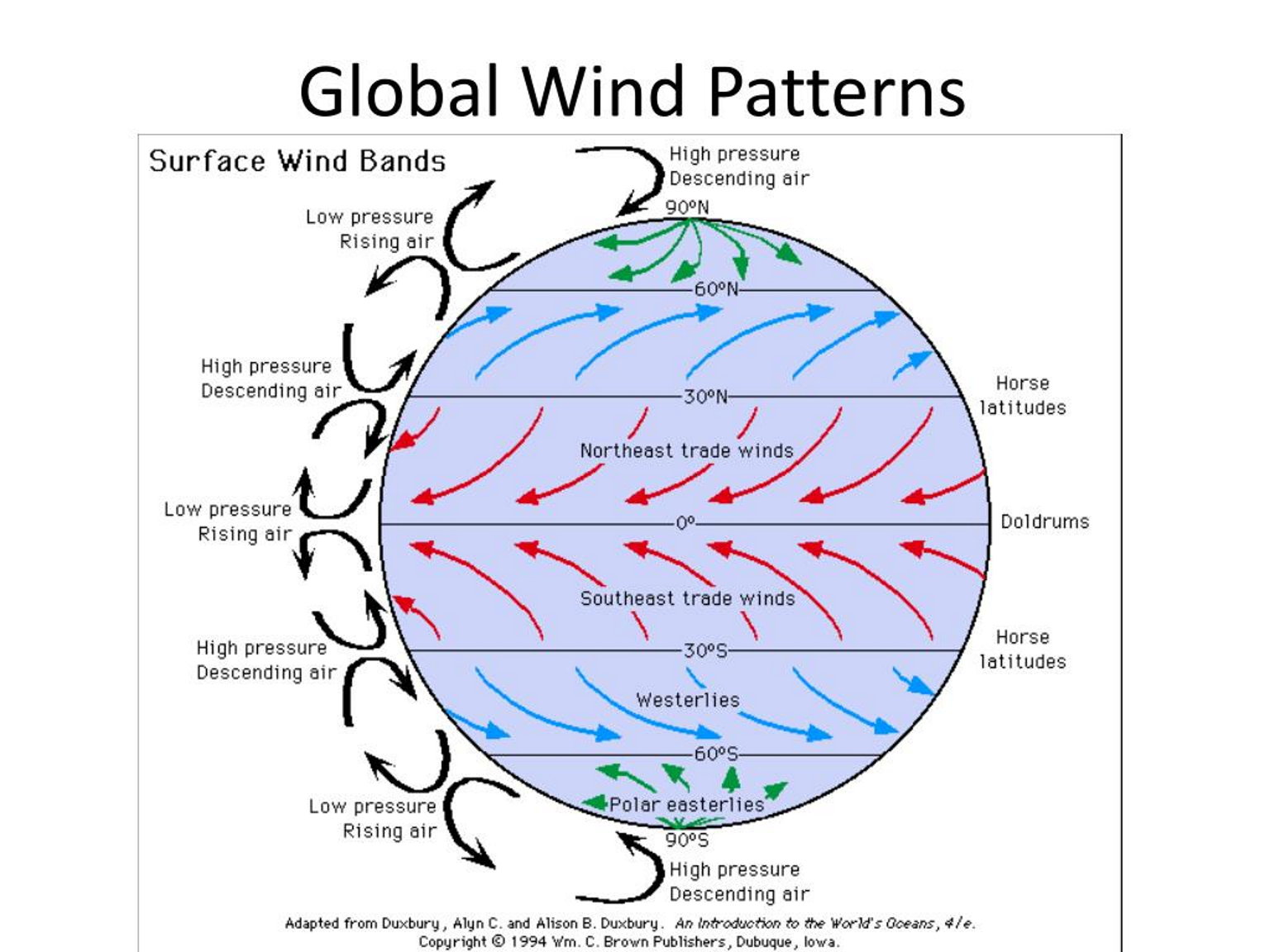 | | |
El Nino/La Nina | El Niño and La Niña are opposite phases of the El Niño-Southern Oscillation (ENSO), a climate pattern affecting global weather: El Niño La Niña Neutral Phase Connection to Australia El Niño: Hot, dry weather increases drought and wildfire risks. La Niña: Cool, wet weather raises flooding and cyclone risks.
Cyclone Larry (2006) occurred during a neutral ENSO phase, showing that extreme weather events can still occur outside El Niño or La Niña phases. | | | |
Impacts/implications for people and place | Social Impacts: Loss of life and injuries. Displacement: People forced to evacuate or relocate. Mental health issues: Trauma, anxiety, and stress. Disruption to education, healthcare, and daily life.
Economic Impacts: Job loss: Especially in agriculture, tourism, and trade-dependent sectors. Infrastructure damage: Costly repairs for homes, roads, and utilities. Loss of crops and livestock, reducing local income. Insurance claims and financial strain on governments and individuals.
Environmental Impacts: Damage to ecosystems: Forests, reefs, and wildlife habitats destroyed. Soil erosion, water contamination, and increased pollution. Long-term effects on biodiversity and resource availability.
| | | |
Impacts/implications for people in MEDC/LEDC countries | Social Impacts MEDCs: Lower death tolls due to better warning systems and infrastructure. Faster access to healthcare and emergency services. Psychological impacts like trauma and anxiety still prevalent.
LEDCs: Higher death and injury rates due to weaker infrastructure and delayed evacuation. Limited access to healthcare and emergency aid. Long-term displacement and reliance on external aid for survival.
2. Economic Impacts MEDCs: High financial costs for infrastructure repair, but governments and insurance cover much of the damage. Faster economic recovery due to better resources and technology.
LEDCs: Severe economic strain on governments and individuals. Destruction of livelihoods (agriculture, trade) leaves people in poverty. Slow recovery due to limited resources and reliance on foreign aid.
3. Environmental Impacts MEDCs: Greater resources for environmental restoration (e.g., replanting forests, cleaning waterways). Damage to ecosystems can disrupt tourism or recreational spaces.
LEDCs: Environmental recovery is slower due to lack of funds and expertise. Long-term damage (e.g., soil erosion, water contamination) often exacerbates poverty.
| | | |
Australian natural hazards | Bushfires Cyclones Floods Droughts Heatwaves Earthquakes Severe storms
| | | |
Cyclone Formation | | | | |
Storm Surges | An abnormal rise in sea level over and above the normal (astronomical) tide levels It can be thought of as the change in the water level due to the presence of a storm These powerful ocean movements are caused by strong winds piling water up against the coast as a cyclone approaches
| 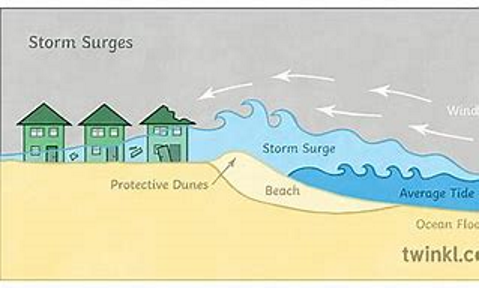 | | |
Cyclones | | 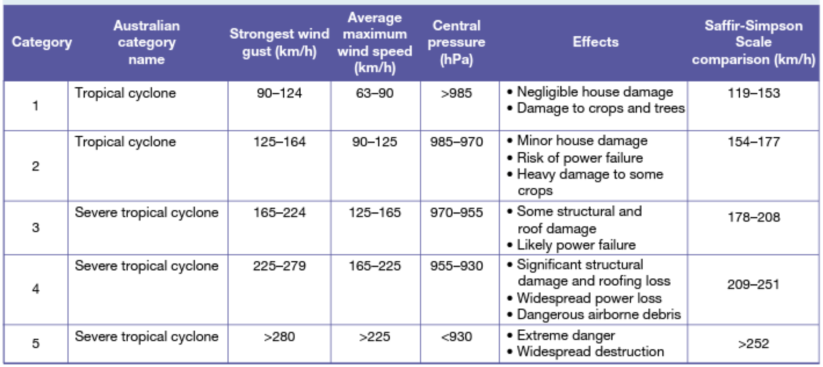 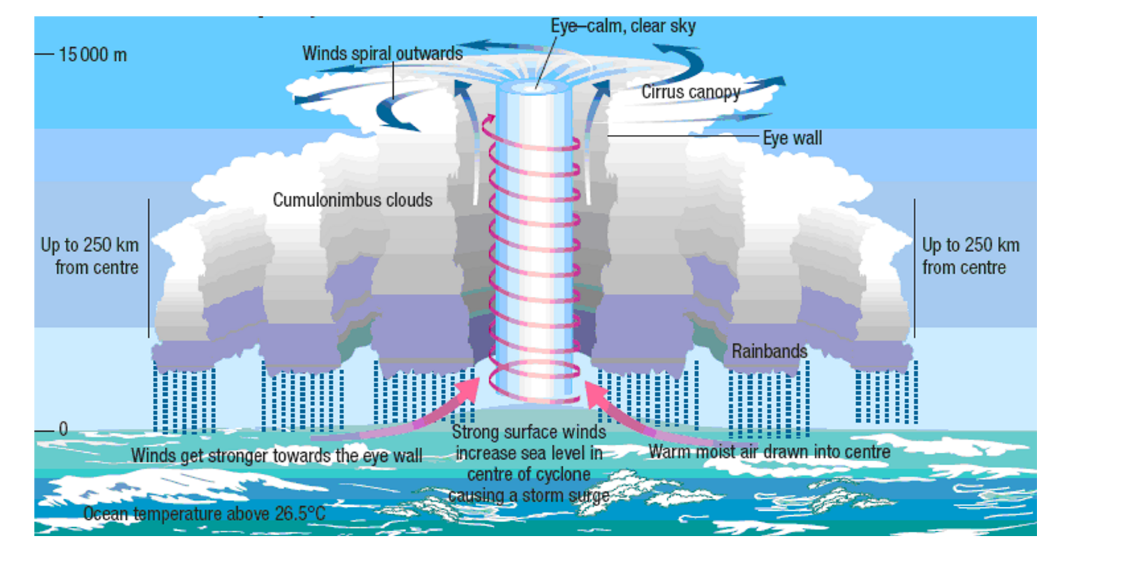 | | |
Hurricanes | | | | |
Typhoons | | | | |
Saffir-Simpson hurricane intensity scale | | | | |
Risk of hazards in TNQ | | | | |
SEE impacts of cyclones | Social Impacts of Cyclones Loss of life and injuries: Due to strong winds, flooding, and storm surges. Displacement: People are evacuated or forced to leave homes, leading to temporary shelters and long-term relocation. Mental health: Increased trauma, stress, and anxiety from loss and recovery challenges. Disruption to services: Education, healthcare, and utilities (power, water) are often affected.
Environmental Impacts of Cyclones Ecosystem destruction: Damage to coastal habitats, forests, coral reefs, and wildlife. Soil erosion and water contamination: Flooding can degrade land and pollute water sources. Loss of biodiversity: Cyclones can disrupt ecosystems, threatening plant and animal species.
Economic Impacts of Cyclones Property damage: Destruction of homes, businesses, and infrastructure requires costly repairs and reconstruction. Agricultural loss: Crops and livestock are often destroyed, leading to income loss for farmers. Business interruption: Disruption to local economies, especially in tourism or agriculture-dependent areas. Recovery costs: Governments and insurance companies face significant financial burden for disaster response and rebuilding efforts.
| Other | Hot air rises, cold air sinks Winds blow from high to low pressure Bigger the pressure difference, the stronger the wind Coriolis Effect - deflection of winds because of the spinning of the Earth Isobars - lines on a map joining places of equal pressure Warmer air = lower pressure Cooler air = higher pressure Low pressure = unstable weather High pressure = stable weather The closer the isobars, the stronger the winds In the southern hemisphere, weather patterns move west to east Winds are named according to their source e.g. westerly winds are coming from the west In the southern hemisphere, low pressure systems spin clockwise. Reverse in northern hemisphere Humidity = the amount of water vapour in the air, the hotter the air, the greater the capability of holding moisture
| |




